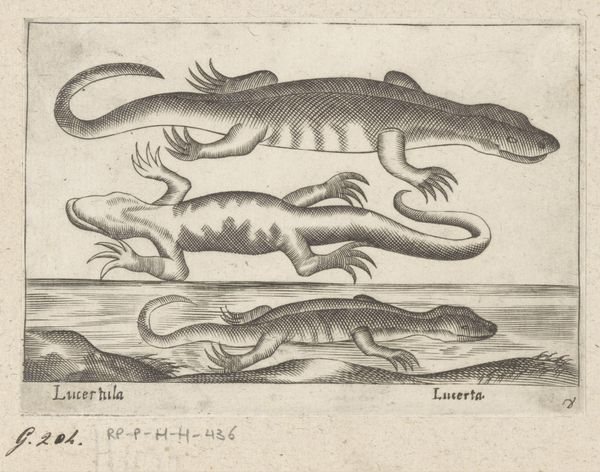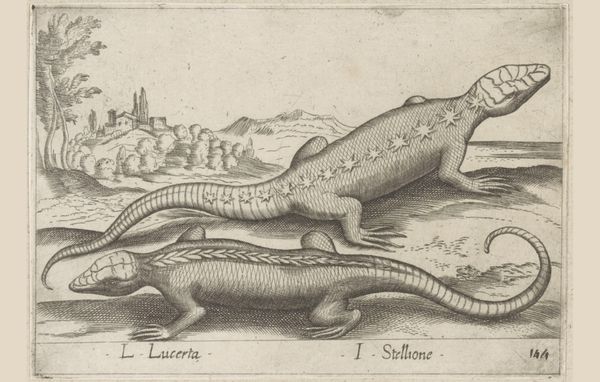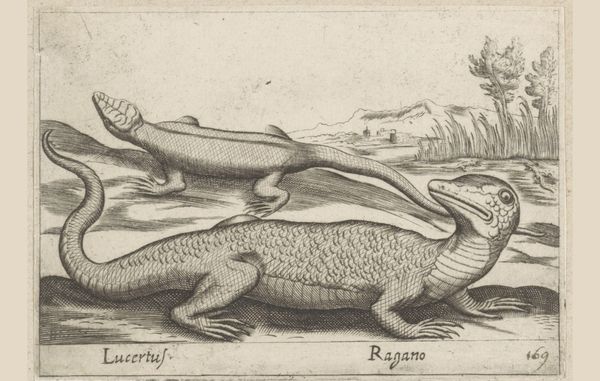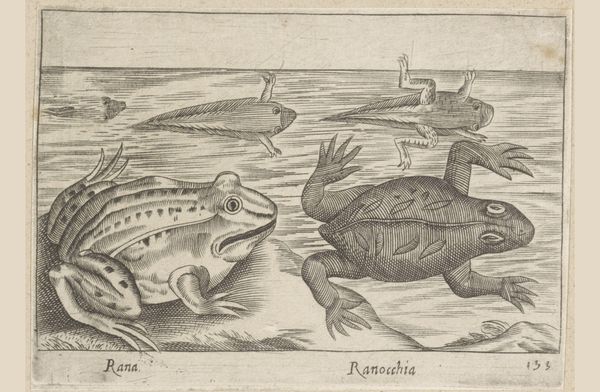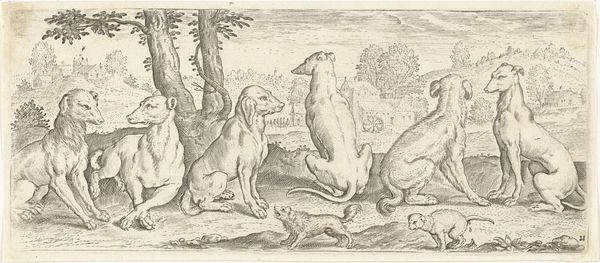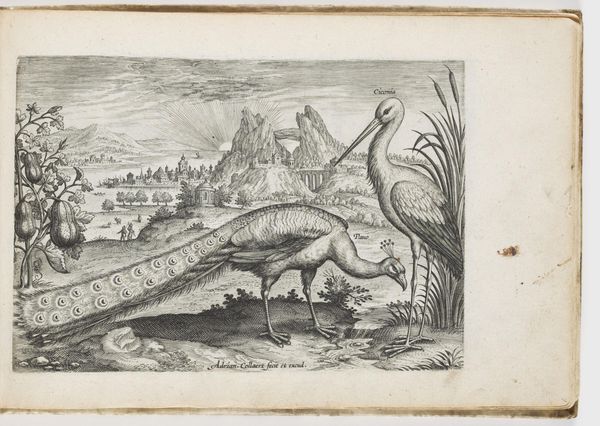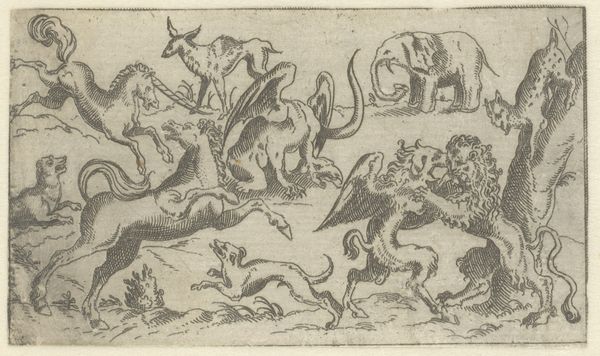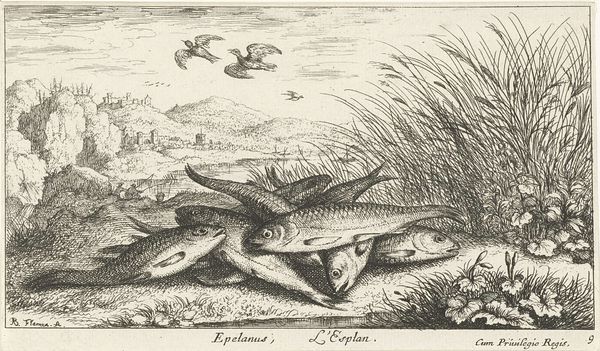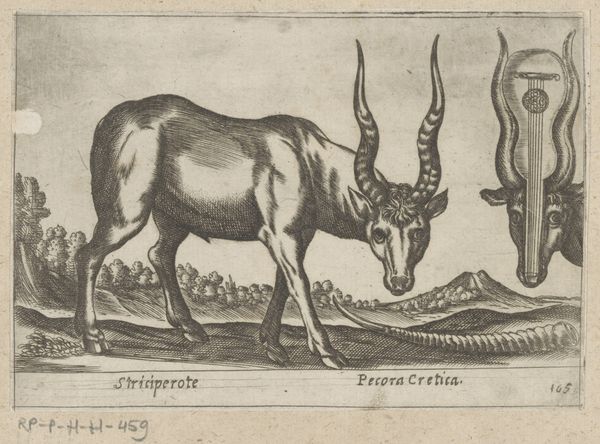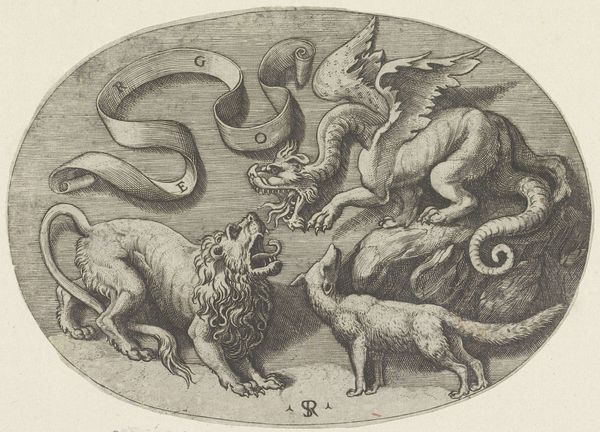
print, engraving
#
baroque
# print
#
old engraving style
#
figuration
#
history-painting
#
engraving
#
realism
Dimensions: height 95 mm, width 137 mm
Copyright: Rijks Museum: Open Domain
Curator: Look at this print, "Hagedissen", meaning "Lizards" from before 1650, created by Antonio Tempesta. The rendering showcases several lizards, or perhaps skinks, arranged in a seemingly casual manner. It is now held at the Rijksmuseum. Editor: My immediate impression is one of scientific detachment, almost clinical in its precision. The stark, linear quality lends a very detailed texture to the scales. I see both an attention to, and almost an obsessive display of, capturing these creatures in detail, especially considering the process of engraving it entails. Curator: It’s fascinating how the artist merges objective observation with inherent symbolism. In Tempesta’s time, natural history prints were very fashionable. Lizards in particular were linked to changeability and the mutability of fortune. In the context of sociopolitical shifts in that era, does that not offer an interesting viewpoint? Editor: Certainly. From a material perspective, each line is etched into a metal plate, demanding labor and precision. Each impression represents a transfer of artistic intent into the public sphere. What materials would have been accessible during that period influence the very image we are contemplating, so even an image such as this carries considerable cultural context. Curator: Agreed. Moreover, let's reflect upon these animals outside of their cultural framing. Are they not symbols for overlooked groups, those marginalized within a society shifting at such an intensive pace? This speaks to narratives of gender and social identity during periods of great flux. Editor: The physicality of the lines making up the depiction, how light and shadow play, they echo economic status as well as manual skills in both artist and printer; skills passed from artisan to apprentice for generations... the labour woven directly into each example. Curator: Looking closely reveals connections beyond simply biological accuracy, but they illuminate how shifting cultural norms affect not only artistic expression but social power balances. The animals become emblems reflecting back what society has come to believe. Editor: Indeed, examining this work allows us to engage with not only the artist’s intention but with what processes define a given era’s self-regard. It forces us to engage intimately within the socio-economic systems as mirrored through representations that carry heavy meaning, both created as product and representative, even when dealing simply at first site within our observation on several scaled reptiles etched on metal and transferred to print.
Comments
No comments
Be the first to comment and join the conversation on the ultimate creative platform.
